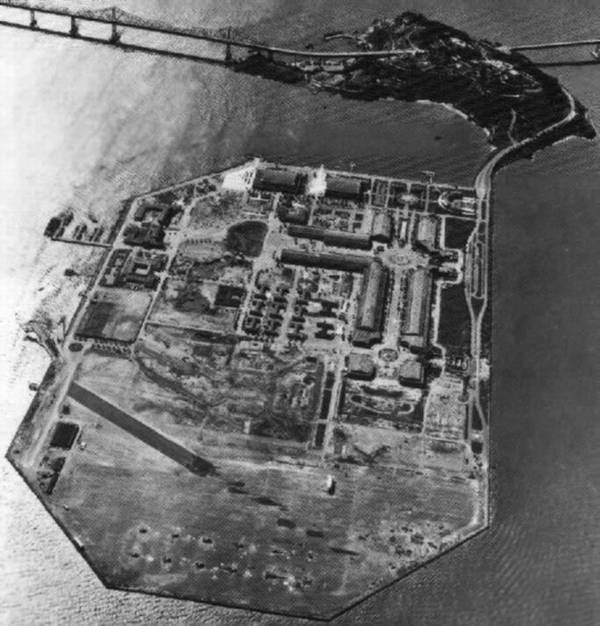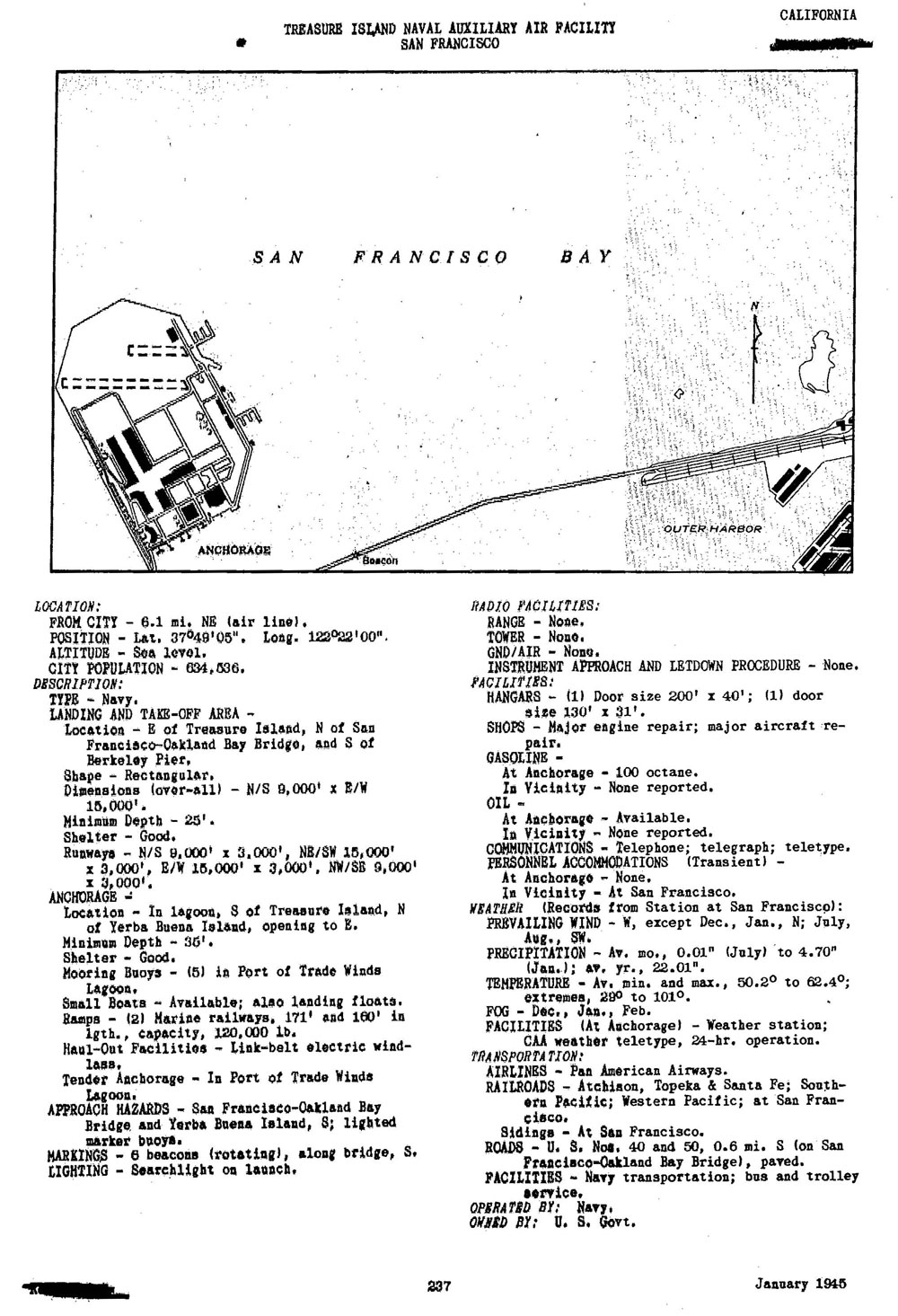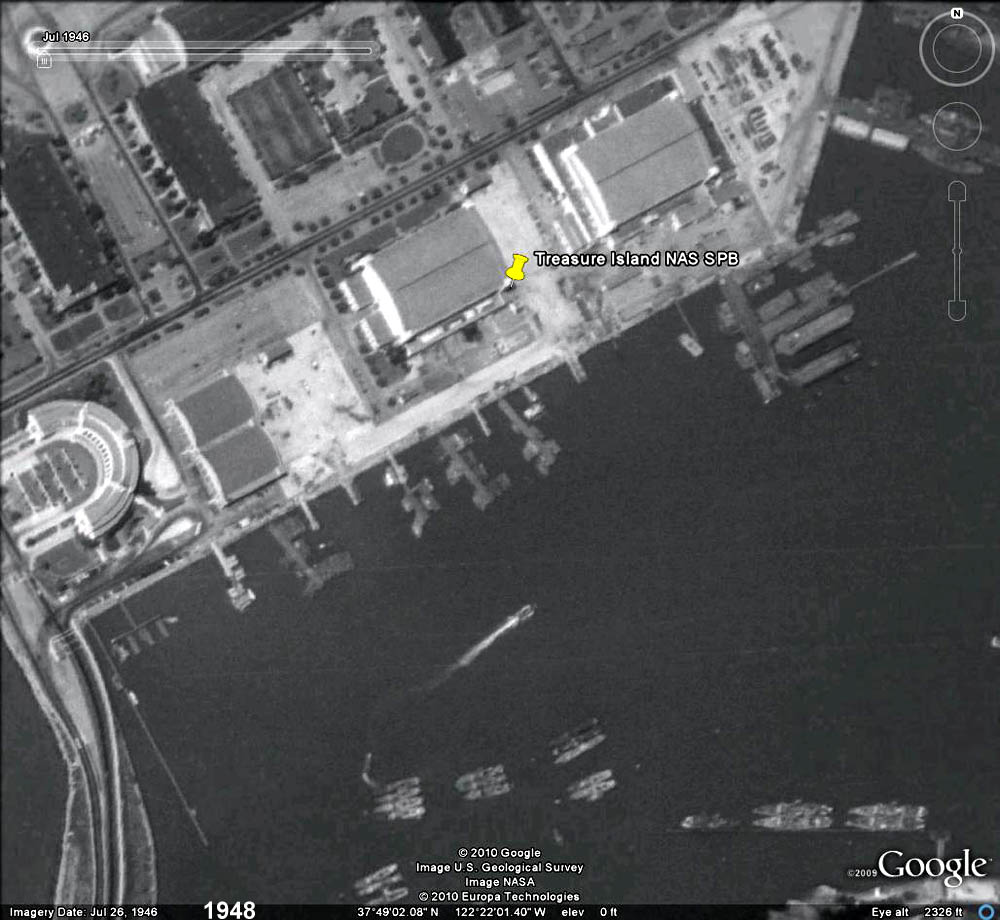

In 1937, a project began to build a man-made island in San Francisco Bay for the 1939-1940 Golden Gate International Exposition and a base for Pan American Airways. Following the Exposition, the island was to become San Francisco's municipal airport. The Army Corps of Engineers oversaw the project with $4 million in funding provided by the WPA.
Construction included a terminal building with two hangars on the southside of the island and an airfield on the northern end. On January 23, 1939, Pan Am moved to new quarters on Treasure Island from Alameda. Pan Am's operation was a part of the Exposition and featured a spectator's gallery in one of the hangars to view the airline's maintenance and overhaul work. With the beginning of the war everything changed. The Navy placed Pan Am under contract in September 1942, and commandeered its aircraft. The Navy also took over the island commissioning an NAAF.
Early in the war, Treasure Island was involved in one of aviation's great mysteries. ZP-32 from Moffett Field used Treasure Island as a forward base for antisubmarine patrols of the approaches to San Francisco Bay. This arrangement saved flight time to and from Moffett. On August 16, 1942, Lt. Cody and Ens. Adams departed Treasure Island at 6 A.M. on a round-robin patrol to the Farallon Islands, Pt. Reyes, and back to Treasure Island. The blimp used was L-8 that had been pressed into Navy service from the Goodyear advertising fleet. The pilots radioed Moffett at 7:38, four miles east of the Farallons, reporting that they were investigating an oil slick. Two hours later, the blimp drifted ashore and hit a glancing blow to seaside cliffs knocking off the depth charges that fortunately, did not explode. The blimp finally came to rest in the middle of a street in Daly City, south of San Francisco -- with no one on board! The door was locked open with the safety bar down. The radios and ignition were on and the only missing equipment consisted of two life-preservers. A search of the patrol area failed to find any trace of the missing pilots. One year later, the Navy declared the pilots dead. Meanwhile, L-8 was repaired, placed back in service, and eventually returned to Goodyear following the war. The public quickly became intrigued by this incident as journalists dubbed the airship "The Ghost Blimp." Whatever happened to the pilots is anyone's guess!
Pan Am operated its Martin M-130 China Clippers and Boeing 314s, as well as Navy supplied Consolidated PB2Y-3Rs. The two M-130s used out of Treasure Island, the China and the Philippine Clipper, operated between Treasure Island and Honolulu. On January 21, 1943, the Philippine Clipper, inbound from Hawaii, struck a mountain northeast of San Francisco with the loss of all on board. The China Clipper labored on until October 1943, when it was returned to Pan Am after having made 88 trips to Hawaii and back in a year's time. Naval ship traffic became so heavy that in 1944, Pan Am moved its operations to Mills Field - today's San Francisco International Airport. Treasure Island remained an NAAF as Pan Am con tinued to use the facility for seaplane overhaul.
Naval construction eventually took over the airfield. The primary mission of the base was processing of personnel to and from the Pacific Theater. At the peak, 12,000 men a day passed through the station. Treasure Island also served as headquarters of the Twelfth Naval District. Following the war, the Navy traded land at Mills Field for the island. In the ensuing years, Treasure Island housed various activities to support the Naval and Marine forces in the San Francisco Bay area. Pan Am's former terminal housed the Commanding Officer of the Treasure Island Naval Base, the Commandant of the San Francisco Naval Base, and the Navy/Marine Corps Museum. Treasure Island was selected for closure by the 1993 Base Realignment and Closure Commission.
Copied with the permission of the author from United States Naval Air Stations of World War II.
Extract, US Army Air Forces Directory of Airfields, January 1845

